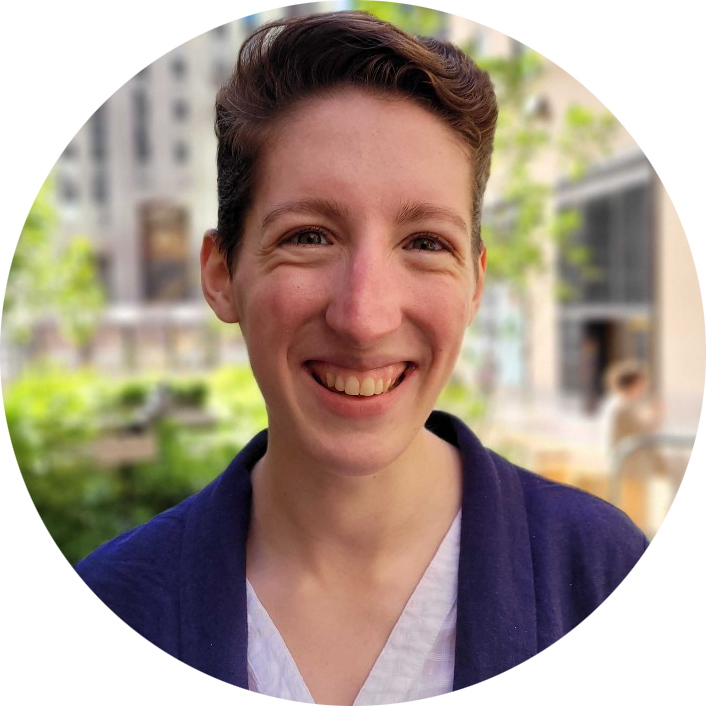
When nonbinary runners register for a race, they don’t always have the choice to compete in a category that accurately reflects their identity. But thanks to the efforts of queer runners and activists, races are gradually changing to become more gender inclusive.
In the Bay Area, members of an LGBTQ running group called the San Francisco FrontRunners have taken the lead to add nonbinary divisions to local races, one major step in the push to make the sport more welcoming to runners who identify outside the gender binary.
“Adding this category is such a huge transformation in the running industry that can have a huge impact on people feeling welcomed and feeling affirmed,” David Eik, the current SFFR team captain, said. “Our identities are everything.”
But in running, as in other sports, it takes extra advocacy to ensure that those identities are respected at races. The norm around gendered categories is slowly beginning to change: several major marathons, including those in Boston, London, and New York City, have adopted nonbinary divisions in the past couple of years, and local races are starting to do the same, often at the urging of queer activists in the sport.
All these pushes for changes in the running community come at a time when transgender athletes’ participation in sports is hotly contested, from bills banning trans children from school sports teams to debates over the rules under which elite trans athletes must compete.
Jake Federowski, a Seattle-based runner and activist, said local races that welcome nonbinary participants make a big difference.
“With the smaller, more regional, local races, it is a lot easier to enact change and it’s a lot easier, I think, to connect with your community,” Federowski said.
Local races are also where the vast majority of people compete and meet other runners in the community. Only a small percentage of runners take part in major national races like the Boston Marathon, so regional events offer more accessible opportunities for nonbinary people to get involved in running.
Eik, who uses he/they pronouns, said they try to ensure that the races on SFFR’s annual circuit have options for runners of all genders, from marathons and half marathons to 5Ks and trail races.
For races without nonbinary divisions, Eik said they have reached out to race directors about changing the race policies. One local trail race director responded immediately, updating registration options and telling Eik that he hadn’t been aware of the issue before.
“It meant a lot for me to see that kind of reaction in a local race that doesn’t really receive a lot of media attention,” Eik said. “I got the sense that he wasn’t doing it for the pat on the back — that he truly wanted this race to feel the most inclusive to the most amount of people, and that was really inspiring to me.”
Phil Oreste, the owner and race director for Urban Coyote Racing, said his company’s trail races around the Bay Area are among those that have added nonbinary registration and awards categories.
“It’s to be more inclusive, but also for them to enjoy the event and participate and be recognized just like anybody else,” he said.

Oreste said the Bay Area is relatively progressive compared with other places in the U.S., which makes it easier to host LGBTQ-affirming races. Local trail races are often smaller than road races, and they tend to have a sense of community Oreste said he wants more people to experience.
“To get as many people on the trail as possible is the most important thing for me,” Oreste said. “Anything that removes a deterrent from someone participating in the race is my biggest goal.”
Activists, for their part, are trying to make it easier for race directors to host inclusive events. In 2022, Federowski published “The Guide to Non-Binary Inclusion in Running,” a free resource for race organizers adding nonbinary divisions, as well as for athletes getting involved in advocacy themselves. Federowski, who uses they/them pronouns, said they consulted other runners and race directors to cover details from registration to restrooms to awards.
“I didn’t have that representation growing up. I didn’t have that language,” Federowski, 27, said. “We can do our part to make sure that representation is existing and the conversation is being had.”
LGBTQ runners are also working for more gender-diverse running clubs. When Federowski started running marathons in 2021, they realized gender diversity wasn’t very well-represented in the running community — even in queer groups like FrontRunners.
“It was a lot of white, cis, gay men,” they said, “and I was like, ‘Where are the trans and nonbinary folks? Where are the people of color? Why don’t we have the entire queer community in our membership?’”
Brent Radeke, an SFFR member based in San Mateo, said it’s essential for running clubs to take more steps to welcome members of all identities. If new runners don’t feel like they fit in, he said, they won’t want to return.
“If you show up and you don’t find anyone else like you, you’re very unlikely to go back for a run because you might not have people to run with,” he said.
Radeke said that while running is slowly changing to welcome athletes of all genders, the political environment can be stressful.
“Can people run and feel like they can be themselves?” he said. “In some spaces, the answer is yes, and then in other spaces, the answer is no.”
Despite the political heat, FrontRunners athletes are continuing to push for races that welcome runners of all genders to the start line. Federowski, for one, said they see their advocacy work as helping create the representation that young trans and nonbinary people need.
“Every time I run a race, I have my nonbinary flag with me,” they said. “It is present with me; it is a physical representation that I am here. Nonbinary people exist. Queer people exist. We’re not going anywhere.”

